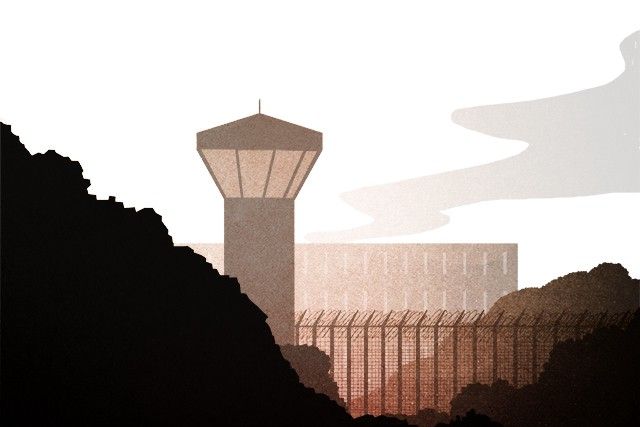By Jo Seck, 2018 Freedom for Immigrants Youth Fellow
Detention centers are not a new phenomenon that sprouted up during the age of Trump. Over the years, the U.S. has been pouring money into these facilities to hold, contain and oppress those that tend to be the most marginalized. From the Clinton Administration onward there has been a growing increase in expenses, funding and growth in America’s Deportation Machine.

In 1996, Bill Clinton’s administration passed the Immigrant Reform and Immigrant Responsibility Act (IRIRA). The Act laid the foundation and funding for immigrants to be detained as well as for the growth of privatized prison and ICE fueled policies¹.
Each state has a different protocol for housing their migrants. Oftentimes, the location of these centers tends to be far away from family members and homelands, putting strain on family members to visit, make phone calls and provide support. Often getting to these detention centers requires those that may not know how to drive to take a long bus ride. Phone calls are another method of communication but often are prohibitively expensive. More progressive states do not necessarily take different approaches to housing their immigrants than conservative states, proving the point that political spectrum does not determine pro immigrant narratives. Before the ICE detainee locator system, no similar publicly-accessible immigrant detainee locator system existed, meaning that detainees can be literally “lost” from their attorneys and family members for days or even weeks after being transferred.
Although many detention center sites are located near border areas, especially in California, Texas, Arizona, and New Mexico, other detention center sites are located near or on superfund sites where the risk of getting an illness or disease is greater. One such site is the Northwest Detention Center in Tacoma, Washington. This area, known as Tideflats, has been used for fossil fuel development, making the surrounding site unsafe to inhabit let alone house inmates. Burning eyes and throats have been reported from inmates, as well as the increased risk of getting cancer. Yet the detention center is one of the largest, at 1,575 inmates or more. Last year in July 2017, 100 inmates went on a hunger strike to protest the harsh conditions at the Northwest Detention Center. Another example is SCI Fayette Prison in Pennsylvania where inmates would routinely get sick, lose weight and endure gastrointestinal problems; doctors would deny that they had any problems. The water quality was really bad and inmates had to drink from the tap while guard dogs were given filtered water. SCI Fayette was built on the edge of a coal ash mine, and when winds picked up ash would blow in the direction of the facility causing a whole host of problems for the inmates. A similar prison in Kentucky is being constructed that also sits on a coal mine, and is reported be the most expensive prison to date. Other detention centers are located in county jails across the country. Another county jail, Wallace Texas, has arsenic-laced water ²,³.
Conditions inside detention centers can often be inadequate, with buildings that are not up to code, very little resources or supplies, a mere blanket to sleep with, poor water quality, inhospitable staff members, lack of medical care, withholding medication, physical violence, sexual abuse, discrimination, unsanitary conditions, lack of a bed, water, or food, segregation used as punishment, or being forced to sign documents. A detention center site in New Jersey earlier in 2018 was serving detainees food with maggots, dirty drinking water, provided them with too few pairs of underwear together with shoddy medical and mental healthcare, according to a scathing new report by a human rights group⁴. The Elizabeth detention center building in New Jersey is also a former warehouse that can cause allergies and asthma for those living there.
According to a recent NIJC report, there are over “1,000 federal facilities that detain immigrants which can include county jails, bureau of prison facilities, office of refugee resettlement centers. ORR centers also house immigrant children.”⁵ Many of these locations are unknown to passersby, with no clear indication that they house migrants. A popular IKEA store in Brooklyn has an unmarked detention center building nearby and ICE has been known to house immigrants in a hotel in San Diego.
In addition, finding resources for immigrants with health problems, asylum cases, and abuse is even more difficult when many abuses come at the hands of ICE themselves. ICE will almost always claim no wrongdoing.
The locations of hospitals, agencies, resettlement centers, and hotels are often unknown when a detainee gets out of their detention center and tries to adjust to the world.
The highest concentrations of detention centers are located near the borders of Mexico and Canada, including New York, California, Texas and Florida. Texas has the most, coming in at 184, followed by California at 120, Colorado at 76, New York at 78 and Florida at 66⁵.
Many of these facilities have been privatized to save costs, sometimes at the expense of worsened living conditions. ICE facilities are also run by private companies such as GEO or CoreCivic, two publicly-traded companies. For example, for county jails that house immigrants, approximately 71 percent are run by either GEO or CoreCivic and 29% by the local government, according to the National Immigrant Justice Center⁶.
Visitation programs, often run through churches, offer support to people held in detention centers without families nearby, but are inadequate in providing mutual support for every detainee. Without an advocate on the inside, fighting for a case and cause can be difficult if there is no visitor that can provide resources, support and advice. Many visitation groups are concentrated in urban sprawls where the ability to collaborate and organize is much easier. But many groups also exist in more rural settings, controverting that mutual support and aid is very possible in even areas that have less resources⁷.
When someone is released from detention, if an agency is sponsoring him or her, that person often must take a bus, train, or car to get to their relocated city. But for those that do not have prior accommodations in place, being released in the middle of nowhere can prove very difficult, especially when they lack a phone or other communications device.
Detention centers operate to contain, hide and oppress those within their walls. Detainees are fighting a never-ending battle against being made invisible. Although tucked away from the fabric of society, rising awareness of heightened environmental contamination, human rights abuses and mutual support has had many wins for detainees seeking freedom. Moving forward we can continue to fight for their cause and advocate on their behalf to ensure better lives for each and every immigrant seeking justice, liberation and family.
Jo Seck is a 2018 Freedom for Immigrants Youth Fellow. They are a graduate of Stony Brook University with a Bachelor’s Degree in Women, Gender & Sexuality Studies. While at Stony Brook, Jo was involved as a Research & Teaching Assistant in the Women, Gender & Sexuality Studies Department as well as a member of the Social Justice League, LGBTA, and as a founding member of the United Nations Association SBU Chapter. They spent their last semester as an Intern with the Queer Detainee Empowerment Project (QDEP) as well as a HYA Youth Advocate Fellow at the Hetrick Martin Institute (HMI). As an extension of a semester project for a class, Jo helped curate Take Back The Fight: Resisting Sexual Violence From The Ground Up Exhibition At The Interference Archive in Brooklyn in the summer of 2017. They also were a Writing & Development Intern for the Northeast Queer College Collective (NEQCC) in 2017. Currently Jo is currently pursuing a Masters of Social Work Program at the University at Albany-SUNY.
¹ Journal of Migration and Human Security “Twenty Years after IIRIRA: The Rise of Immigrant Detention and Its Effects on Latinx Communities across the Nation”
² “Immigrant Detainees Are Being Held at an EPA Superfund Site.” ThinkProgress, ThinkProgress, thinkprogress.org/superfund-detentions-epa-ice-75ff16ad20d9/
³ Waters, Michael, “How Prisons Are Poisoning Their Inmates” (The Outline, 23 July 2018) theoutline.com/post/5410/toxic-prisons-fayette-tacoma-contaminated?zd=1&zi=t5yfcpuu
⁴ Heyboer, Kelly, "Immigrants Face Maggots and Worse in ICE Detention, in N.J., Report Says” (NJ.com, February 28, 2018) https://www.nj.com/news/index.ssf/2018/02/inside_the_harsh_and_inhumane_conditions_at_njs_im.html
⁵ National Immigrant Justice Center https://immigrantjustice.org/ice-detention-facilities-november-2017
⁶ Cullen, Tara Tidwell, “ICE Released its Most Comprehensive Detention Data Yet. It’s Alarming.”(National Immigrant Justice Center, March 13, 2018) https://immigrantjustice.org/staff/blog/ice-released-its-most-comprehensive-immigration-detention-data-yet
⁷ Freedom for Immigrants’ detention map: https://www.freedomforimmigrants.org

